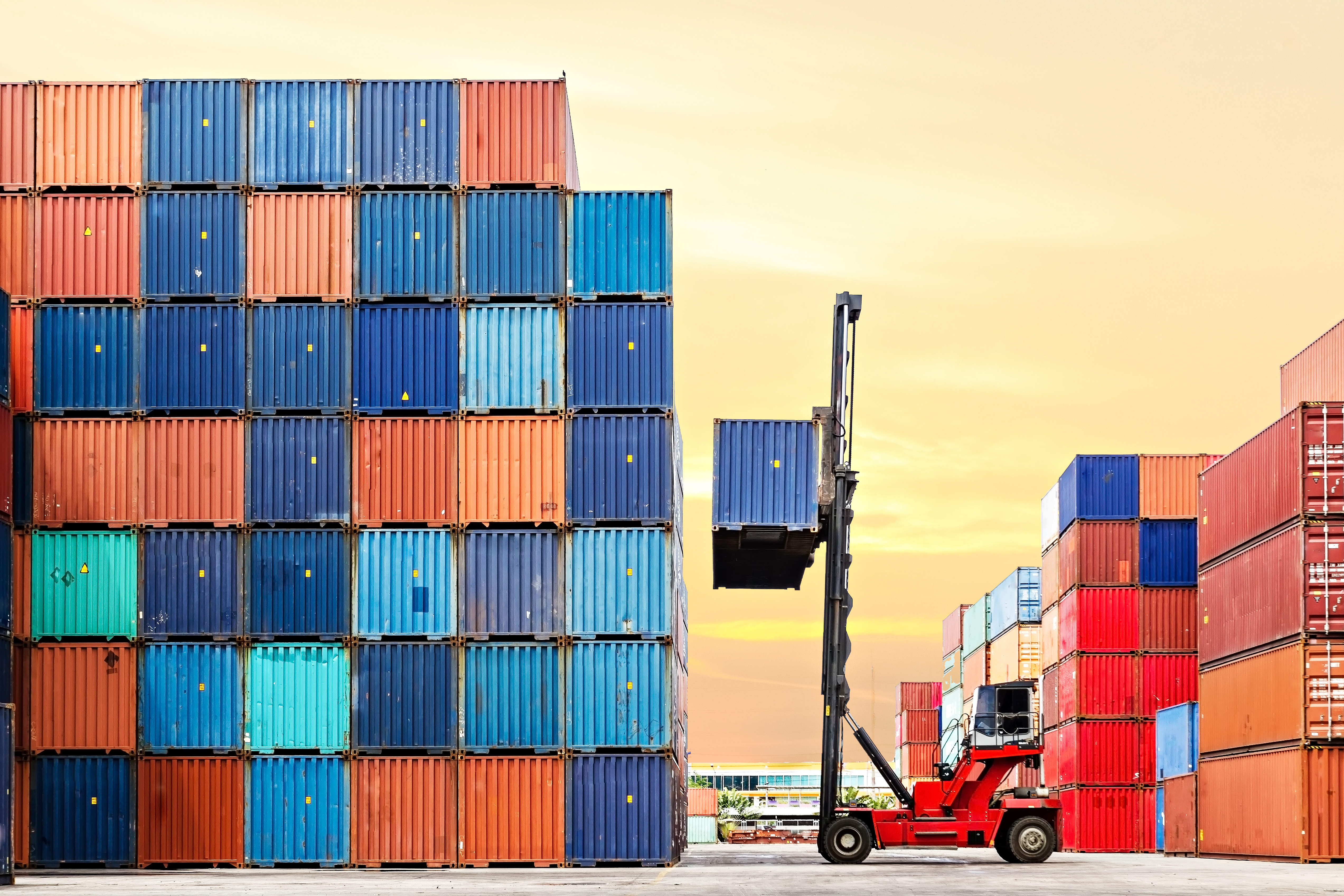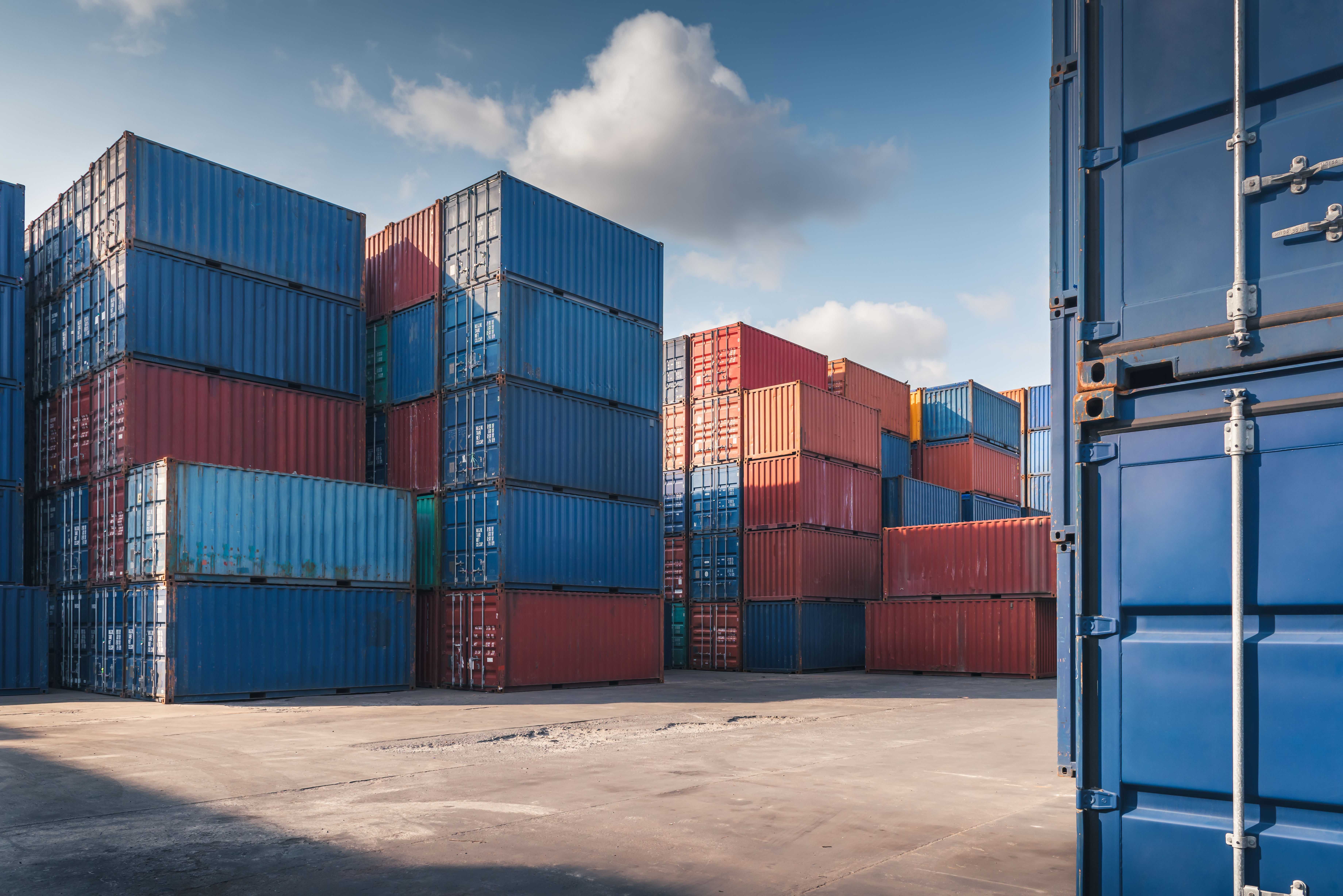
Purchasing and maintaining containers is among the most significant investments that shipping companies undertake and remains an indispensable aspect of their operations. Aside from the considerable financial investment, several factors also make containerization quite complex, from deciding the type to purchase to handling, transportation, and storage processes.
Therefore, shipping lines develop container yards to address the complex logistical challenges of container storage. These yards serve as centralized locations for storing, maintaining, and repairing shipping containers, all critical components of the global supply chain. Shipping lines implement these components to manage shipping containers and ensure the efficient movement of goods and materials.
What Is A Shipping Container Yard
A container yard is a sprawling area housing shipping containers before they are loaded with cargo and transported to the port. The rationale behind establishing a container yard is relatively straightforward; to avoid empty containers occupying a significant amount of valuable space at the port, which can be reserved for other essential processes such as loading and unloading.
Most of these yards feature state-of-the-art facilities and equipment that aid container inspection, maintenance, and repair, ensuring they are in good condition and ready for subsequent use. Shipping container yards serve as a critical aspect of the global supply chain, providing a platform for shipping lines to efficiently manage their inventory and facilitate the smooth flow of cargo.
How Do Container Yards Work
The specific processes of a container yard can vary depending on the shipping company’s requirements; however, several common elements are peculiar to every yard. Typically, containers arrive at the yard from various locations, such as ports, rail yards, or trucks, and are inspected to ensure the current condition. Those that require repairs or maintenance are directed to specific areas of the yard where yard workers provide these services.
Yard workers employ specialized equipment such as cranes and forklifts to move containers around the yard. Containers are stacked and organized in rows and columns, with each container assigned specific locations within the yard. This organization allows for the efficient movement and tracking of containers, enabling shipping companies to manage their inventory effectively.
Containers stored in the yard may be awaiting loading onto an export vessel or recently unloaded from an import vessel. This is why most container yards are stationed near terminals or inland ports. It’s also possible for containers to remain in the yard for extended periods, mainly when there is a delay in delivery or reloading. Additionally, some containers may be stored in the yard for temporary consolidation, allowing for more efficient use of shipping space.
Regardless of the shipping company’s requirements, containers undergo specific storage processes in every yard, such as inspection and maintenance. These processes help to ensure that containers consistently comply with international shipping standards and regulations, which are critical to the safe and efficient transport of goods and materials.
Benefits Of Shipping Container Yards

- Efficient Use Of Space
Shipping container yards allow for efficient use of space by maximizing available space. These yards use vertical space by stacking containers on top of each other. The standardized dimensions of these containers also make them easy to stack safely and securely.
By arranging containers this way, the space in the yard is fully utilized, enabling more containers to be stored within the same area. This benefit is significant in urban areas where land is scarce and expensive. In these cases, container yards serve as an efficient way to store large volumes of containers in a small footprint.
- Flexibility
Container yards can be used for several purposes, significantly improving their functionality and flexibility in logistics. Container yards improve flexibility by providing a versatile and adaptable space that can help to solve a wide range of logistics challenges.
Aside from the typical storage, container yards also streamline logistics operations which can improve handling speed and reduce wait time. Other value-added services container yards provide include repairs, maintenance, and cleaning. By diversifying their offerings, shipping companies can become flexible enough to respond to shifting market demands.
- Security
Security is a significant factor that propels shipping companies to invest in container yards. These yards offer a location to store goods and equipment and improve container security in several ways.
Container yards are secured with perimeter fencing and controlled access points to prevent unauthorized entry. They also feature extensive surveillance systems, from cameras to motion detectors, which help to alert security personnel to potential security breaches.
Other strategies employed to improve safety include regular container inspections, tracking and monitoring systems, and constant collaboration with law enforcement. Container yards implement these security measures to enhance container security and reduce the risk of theft, tampering, and other security breaches.
- Easy Transportation
Intermodal shipping containers are designed to be easily transported and moved via different modes of transportation. Yards make the most of these characteristics by organizing containers in a way that makes it easy to access and move them around. This significantly reduces the time and effort required to load and unload cargo.
Container yards are typically located in strategic areas that are easily accessible by different modes of transportation. This includes proximity to ports, highways and rail lines, and intermodal connectivity, making transporting containers to their final destination easier.
- Cost Effectivity
Shipping container yards have the potential to be more cost-effective than other storage options by implementing a range of strategies. Container yards utilize space efficiently, improve operational processes, decrease transportation costs by providing a centralized storage location, offer intermodal connectivity, and provide additional value-added services.
All these features help to reduce operational and shipping costs for logistics companies and shippers. Overall, when the functionality of container yards is considered in its entirety, these yards offer a more cost-effective option for businesses and organizations.
Conclusion
Container yards serve as an excellent example of efficient logistics and operations management. They illustrate shipping lines’ strategies to address significant shipping challenges, such as congestion and limited space. By offering a centralized location to collect, store, and maintain shipping containers that are not in use, these yards can help alleviate congestion at nearby ports, which can be essential in keeping the global supply chain running smoothly.
In summary, container yards represent a comprehensive and valuable interim holding facility combining multiple essential services in one location. They provide a cost-effective solution for managing shipping containers and are crucial components of the global supply chain.
